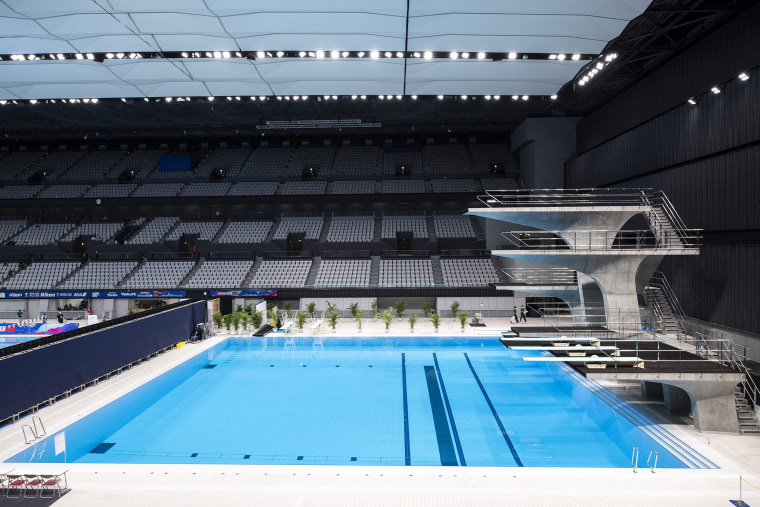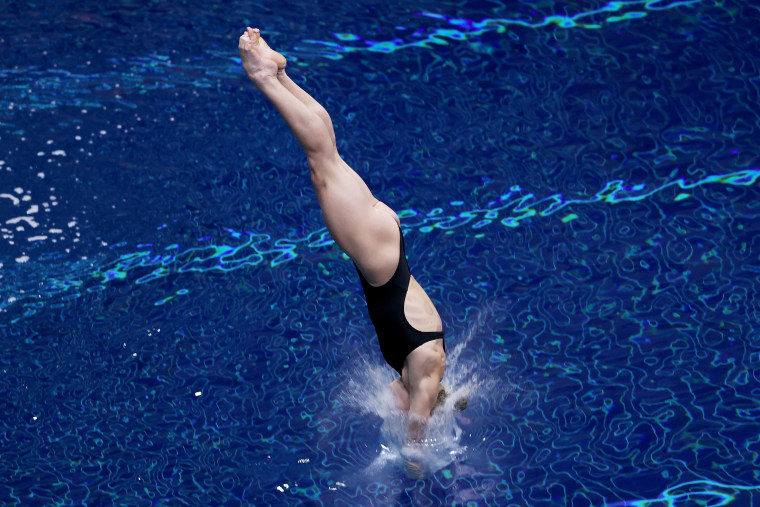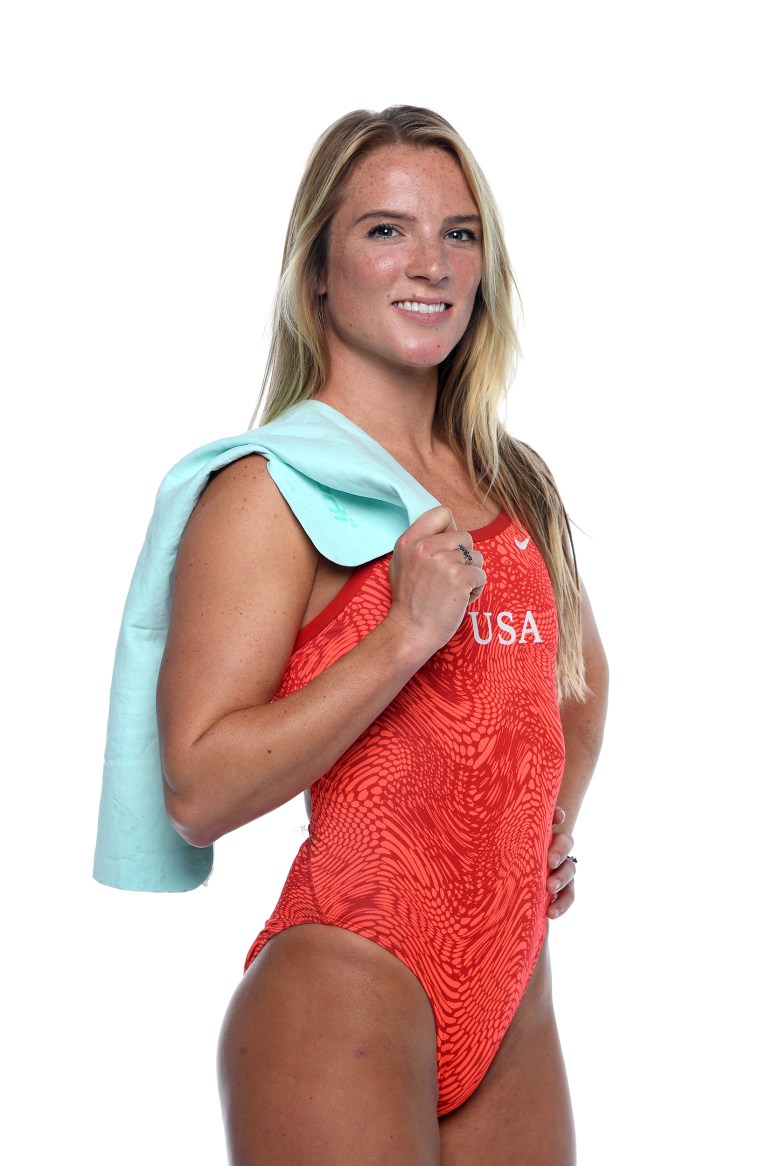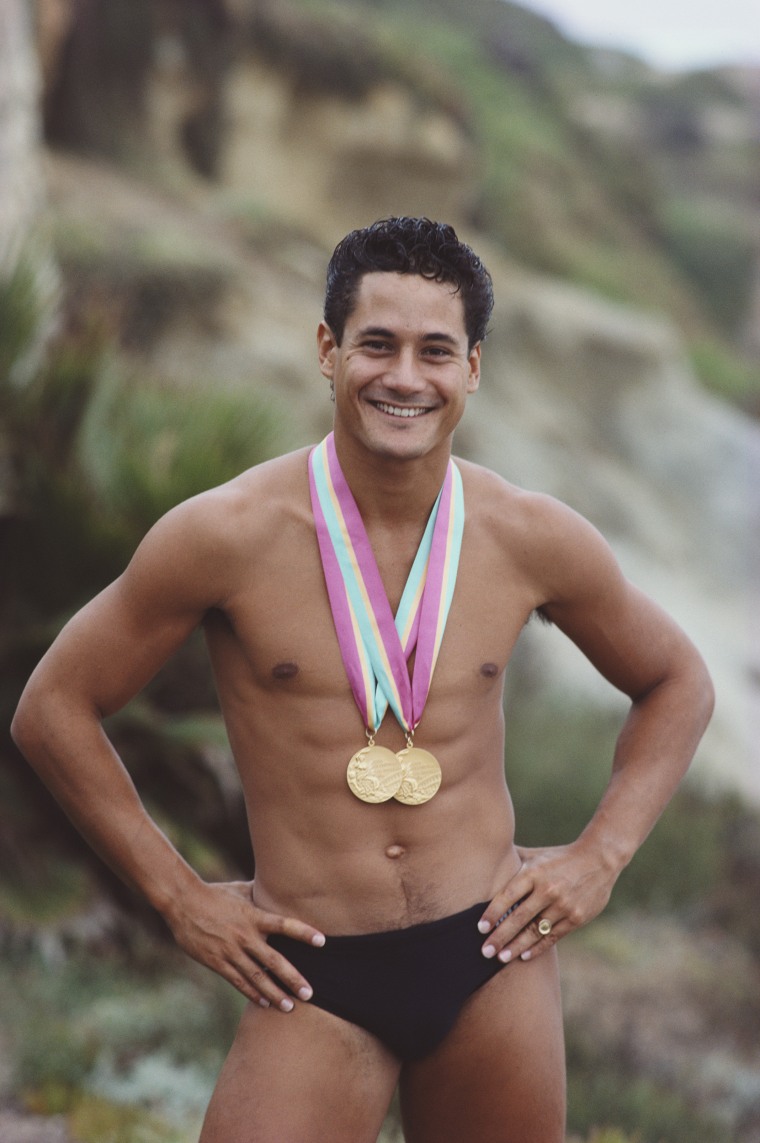Diving has been a part of the Olympics since the 1904 St. Louis Games and today, diving is one of the most popular of the 46 sports featured in the Summer Games.
For the 2021 Tokyo Olympics, we found answers to some of your most-Googled questions about the sport. Why do divers shower between dives? Why do Olympic divers use tiny towels and wear even tinier bathing suits?
TODAY spoke to Leslie Hasselbach Adams, USA Diving's high performance manager and education coordinator, to answer some of your most frequently searched questions about the highly-anticipated diving competitions at the 2020 Tokyo Olympic Games.
Who is on the U.S. Olympic diving team?
After the U.S. diving trials wrapped on June 13, 11 divers qualified for Team USA: Andrew Capobianco, 21, Tyler Downs, 18, Alison Gibson, 22, Hailey Hernandez, 18, Michael Hixon, 27, Brandon Loschiavo, 24, Krysta Palmer, 29, Jessica Parratto, 27, Delaney Schnell, 22, Jordan Windle, 22, and Katrina Young, 29.
Three of the 11 divers — Capobianco, Palmer and Schnell — will pull double duty and compete in two events. Olympic diving events began Sunday, July 25, and run through Saturday, August 7.
Jessica Parratto and Delaney Schnell became the first U.S. team to medal in the women's diving synchronized 10m platform competition, taking home silver. Andrew Capobianco and Michael Hixon won silver in the men's synchronized 3m springboard competition.
Why do divers take showers between dives?
During the Olympics, divers rinse off or shower in between dives. “Part of it is just to get warmed up," Hasselbach Adams said. "When you're jumping in and out of the water, the water is usually pretty warm. When you get out, the atmosphere is a little chilly so they like to keep their muscles loose and hopping in the shower or in a hot tub — there's usually a little hot tub nearby as well — they dunk themselves in, in between dives, or you'll see them dunking their shammy into the hot water and putting it over themselves.”
Why do divers dry off between dives?
There are a couple of reasons divers may dry off between dives, according to Hasselbach Adams. “They dry off, for one, to keep (their) body warm before they put their warm-ups back on to wait for their next dive," she said. "The other reason why is, when they spin, their spin rate is really fast and if they're soaking wet, they can slip out of their position, slip out of their dive and that would not be a good ending. A lot of our athletes actually use some sort of tacky substance (like iTac) to help them not slip out of their tucks and they'll put it on their shins (to) help aid them."
Why do divers spray water on high dives?
Hasselbach Adams said, “It's called water agitator, it's what we call it officially, and it agitates the surface of the water so you can see when you're spinning, especially from a really high height, it's hard, if the water is super flat, it looks like glass so you can't tell the bottom of the pool. So by agitating the surface of the water, it breaks the surface tension, and it creates more of a visual view of when you have to be ready to enter the water.”
How much splash is too much splash?
“In general, if it looks like a cannonball, that is not good," Hasselbach Adams revealed. "You're not (getting) a good score at all. Ideally, what we call a dive with no splash is a rip. So if you rip it, it's like, no splash, has a really distinct sound, especially if you go even higher, you can hear a great dive. … A lot of people said it sounds like you're ripping a piece of paper. It's really cool. It's a really great sound to hear.”
How deep is an Olympic diving pool?
“It has to be at least 15 feet deep," Hasselbach Adams said.
How high is an Olympic diving board?
The Olympic diving boards are placed at two different heights — at three meters and 10 meters. To put that height into perspective, Hasselbach Adams said, "A good way to think about 10 meters is to think about it as an equivalent of a three-story building."

What are the types of Olympic diving?
"We have two disciplines: springboard and platform," explained Hasselbach Adams. And then, within the apparatus, there's different events. There's individual and synchronized diving events.
"When we send a team, we will have partners in the three meter synchro event and then we'll send two divers for the individual events."
Why do Olympic divers wear Speedos?
"Wearing Speedos or not necessarily that brand but that style of suit, (has) been a part of our sport," Hasselbach Adams said.
Why are divers’ bathing suits so small?
Unlike other swimmers, divers tend to wear smaller swimsuits and not full-body swimsuits that cover the arms and legs. "The latest trend that divers around the world are, I guess embracing, is the bottoms of their suits have gotten a lot smaller for the females," Hasselbach Adams said. "So it actually is a sport of aesthetics, and they judge the overall impression from your starting position all the way through ... when your toes go under the water, you're being judged from that point from an overall impression standpoint.

"That is the standard. I know in our younger age groups, the boys especially aren't quite comfortable with those and sometimes that deters young folks from joining our sport, what they have to wear to compete. So, on the men's side, they have, what they're called jammers. So they're longer bathing suits. They go right above their knee, and they're lycra-based fabric. So (they) can ... practice a little more modesty when they enter our sport very young and then eventually they'll graduate as they get older ... they'll graduate into more of a brief-type of bathing suit."
Why do Olympic divers use little towels?
“They do come in different sizes now," explained Hasselbach Adams. "There's one that's the size of a sheet of paper and then there's a bigger one that's a little longer and a little wider that you'll see some divers use, but it's basically their security blanket. For a diver, your shammy is everything.

“For some, it's this superstitious type of thing. You have to have your favorite shammy with you at all times and some of them are very holey and ratty and coming apart but it's whatever works for them. Others are OK with getting a new shammy for a big competition.”
How old do you have to be to dive in the Olympics?
The International Swimming Federation or FINA (its acronym comes from its French name, Fédération Internationale de Natation), which is the global governing body for diving, swimming and water polo, sets age requirements for diving competitions. According to its latest 2017-2021 rules, competitors can be as young as 14 although there are different subgroups for divers depending on their ages. USA Diving also divides competitions based on age groups.
Who are some of the best Olympic divers? Who is the best diver ever?
Opinions vary but as Hasselbach Adams put it, "In the United States anyway, we feel that the best diver ever and worldwide, a lot of people still feel that Greg Louganis is the best diver ever, which I wholeheartedly believe. He's incredible."

At the 2016 Rio Olympics, Chinese athletes nearly swept the board, taking gold in 7 out of 8 events. Among the American medalists, David Boudia missed qualifying for the Olympics this go-around, Steele Johnson withdrew from the Olympic trials, following a foot injury, and Sam Dorman retired in 2018 after 19 years of competition. Only Mike Hixon, who won a silver medal with Dorman in 2016, will return for his second Olympics at the 2020 Games.
Is Olympic diving dangerous?
Diving is considered a collision sport, putting it in the same category as sports like boxing, football, ice hockey and lacrosse, according to a 2011 handout from American Academy of Pediatrics. The force of a diver hitting the water can break bones and dislocate joints, according to the AAP. “Divers are also at risk of injuries from hitting the board or platform as well as overuse injuries similar to gymnasts from frequent jumping, back arching, trunk flexion, and back twisting. Injuries can also occur from training on ‘dry land.’ This type of training usually includes weight lifting and the use of spotting belts, trampolines, and springboards.”
Hasselbach Adams emphasized that competitive diving is regulated, with USA Diving emphasizing education and coaching for aspiring athletes from a young age. "As a sport organization, we have programming from lessons to grassroots, to our junior competitive level to an international competitive level ... our sport is designed for the very, very beginner, and all the way through the very experienced competitor, so we provide great educational opportunities for those coaches that are coaching our learning divers or those people who are interested in learning about the sport and we also have very well-seasoned, experienced coaches that train our high level elite athletes as well."
Which Olympic diver hit their head?
Four-time gold medalist and retired diver Greg Louganis hit his head during a preliminary round at the 1988 Seoul Olympics. Louganis sustained a cut and concussion but later went on to win two gold medals.
Since then, Hasselbach Adams said, "We haven't had any divers hit their heads from an elite standpoint, that I'm aware of more recently. But that is an unfortunate part of the sport, it happens very rarely. And, you know, we try our best not to let that happen but sometimes, human error takes over."
How fast do Olympic divers hit the water?
"From the 10 meter, it's estimated they hit the water at about 35 miles an hour," Hasselbach Adams explained. "It would be a little slower with three meter."
